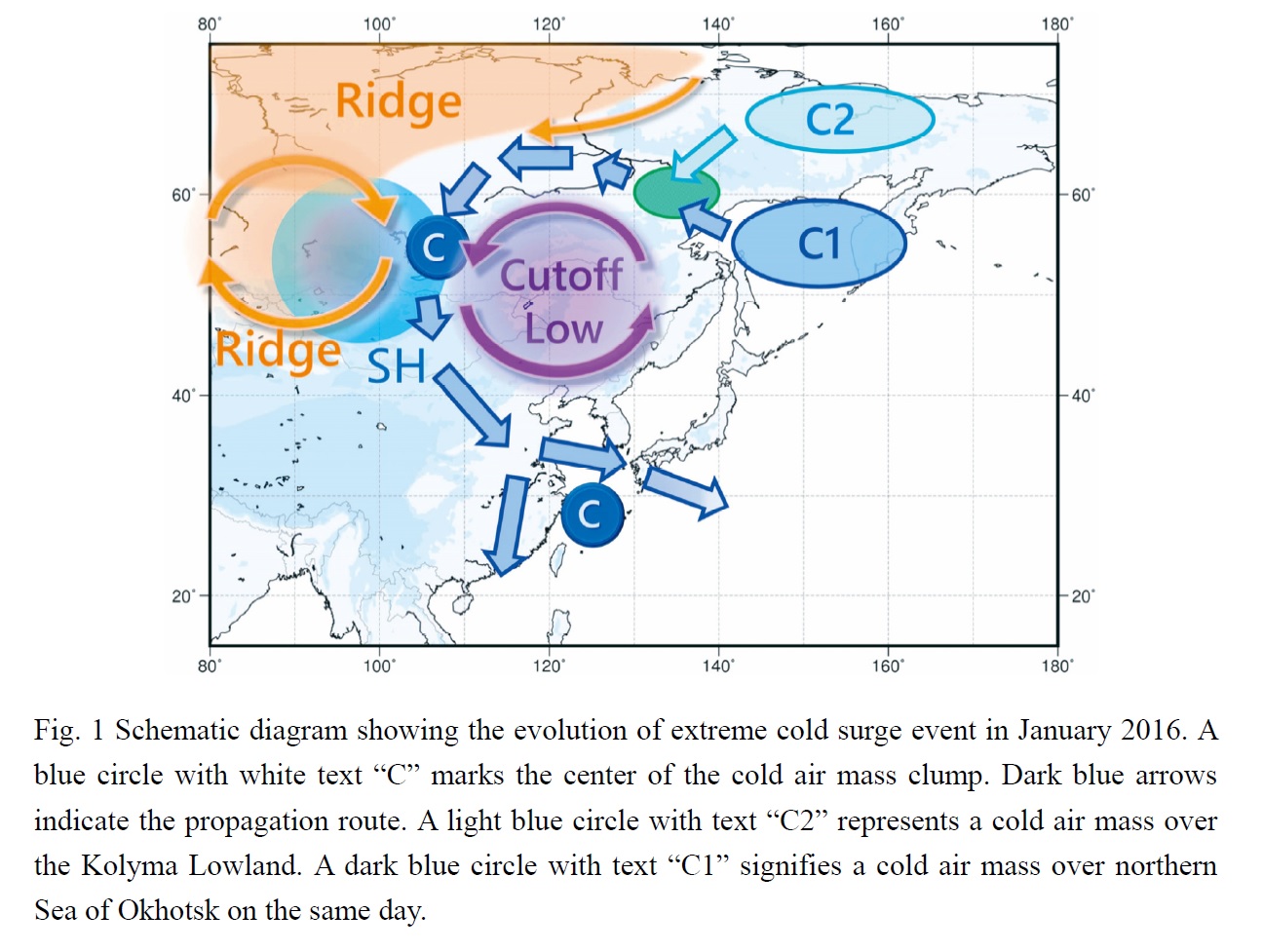Graphical Abstract
Yamaguchi, J., Y. Kanno, G. Chen, and T. Iwasaki, 2019: Cold air mass analysis of the record-breaking cold surge event over East Asia in January 2016. J. Meteor. Soc. Japan, 97, 275-293.
https://doi.org/10.2151/jmsj.2019-015
Graphical Abstract
Plain Language Summary: An extreme cold surge event occurred in January 2016 was studied by means of the isentropic cold airmass analysis method. We traced the cold air masses below a potential temperature of 280K more than a week, and found that a clump of thick cold air masses gathered on the eastern Siberia, moved to Lake Baikal, and then spilled southeastward over East Asia.
Highlights:
- The cold air mass is blown by the circulation related with two ridges, cutoff low, and surface intense Siberian High.
- The time evolution of cold air mass is dominated by adiabatic processes, especially advection, when moving over the continent.
- The abnormality of the cold air mass thickness increases considerably as cold air mass migrates southward, although the thickness itself shows slight change, suggesting that the normal cold air mass from the Sea of Okhotsk and northeastern Siberia becomes abnormal during westward and strong southward migration.







